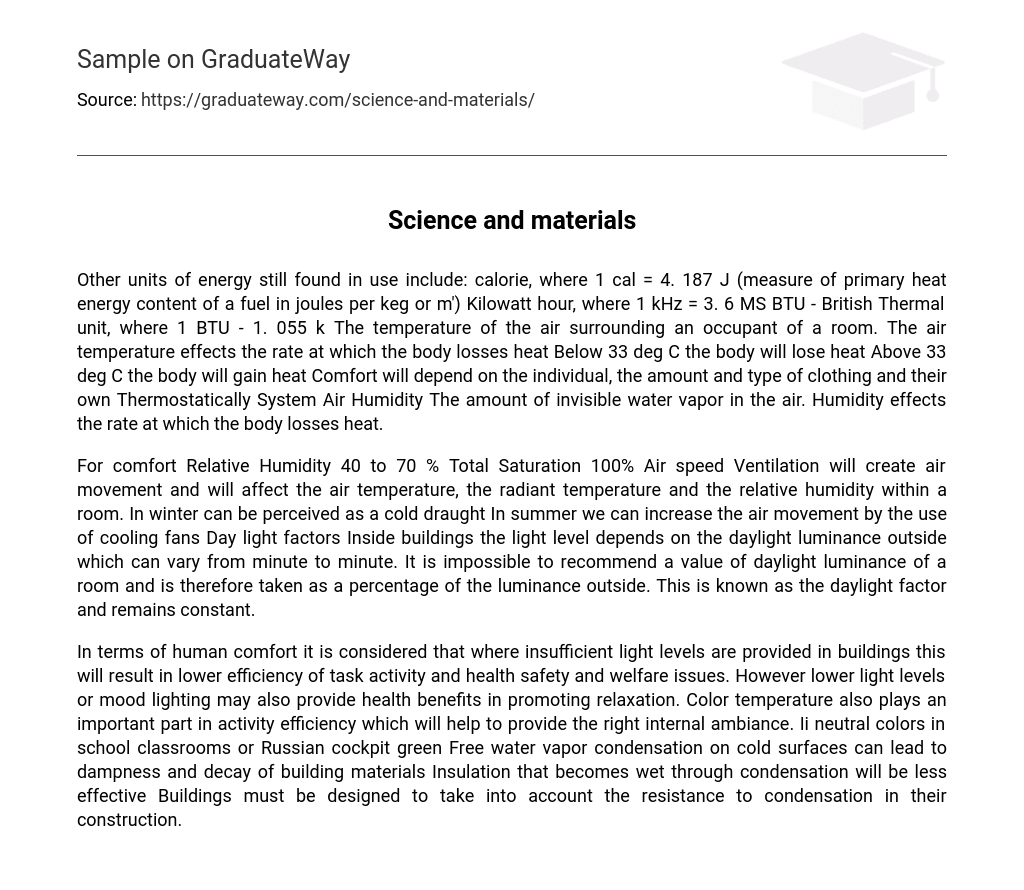Other units of energy still found in use include: calorie, where 1 cal = 4. 187 J (measure of primary heat energy content of a fuel in joules per keg or m’) Kilowatt hour, where 1 kHz = 3. 6 MS BTU – British Thermal unit, where 1 BTU – 1. 055 k The temperature of the air surrounding an occupant of a room. The air temperature effects the rate at which the body losses heat Below 33 deg C the body will lose heat Above 33 deg C the body will gain heat Comfort will depend on the individual, the amount and type of clothing and their own Thermostatically System Air Humidity The amount of invisible water vapor in the air. Humidity effects the rate at which the body losses heat.
For comfort Relative Humidity 40 to 70 % Total Saturation 100% Air speed Ventilation will create air movement and will affect the air temperature, the radiant temperature and the relative humidity within a room. In winter can be perceived as a cold draught In summer we can increase the air movement by the use of cooling fans Day light factors Inside buildings the light level depends on the daylight luminance outside which can vary from minute to minute. It is impossible to recommend a value of daylight luminance of a room and is therefore taken as a percentage of the luminance outside. This is known as the daylight factor and remains constant.
In terms of human comfort it is considered that where insufficient light levels are provided in buildings this will result in lower efficiency of task activity and health safety and welfare issues. However lower light levels or mood lighting may also provide health benefits in promoting relaxation. Color temperature also plays an important part in activity efficiency which will help to provide the right internal ambiance. Ii neutral colors in school classrooms or Russian cockpit green Free water vapor condensation on cold surfaces can lead to dampness and decay of building materials Insulation that becomes wet through condensation will be less effective Buildings must be designed to take into account the resistance to condensation in their construction.





